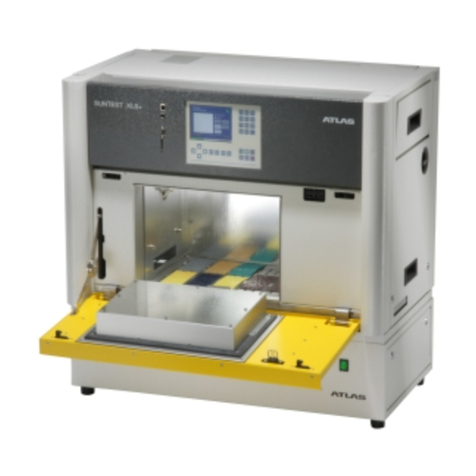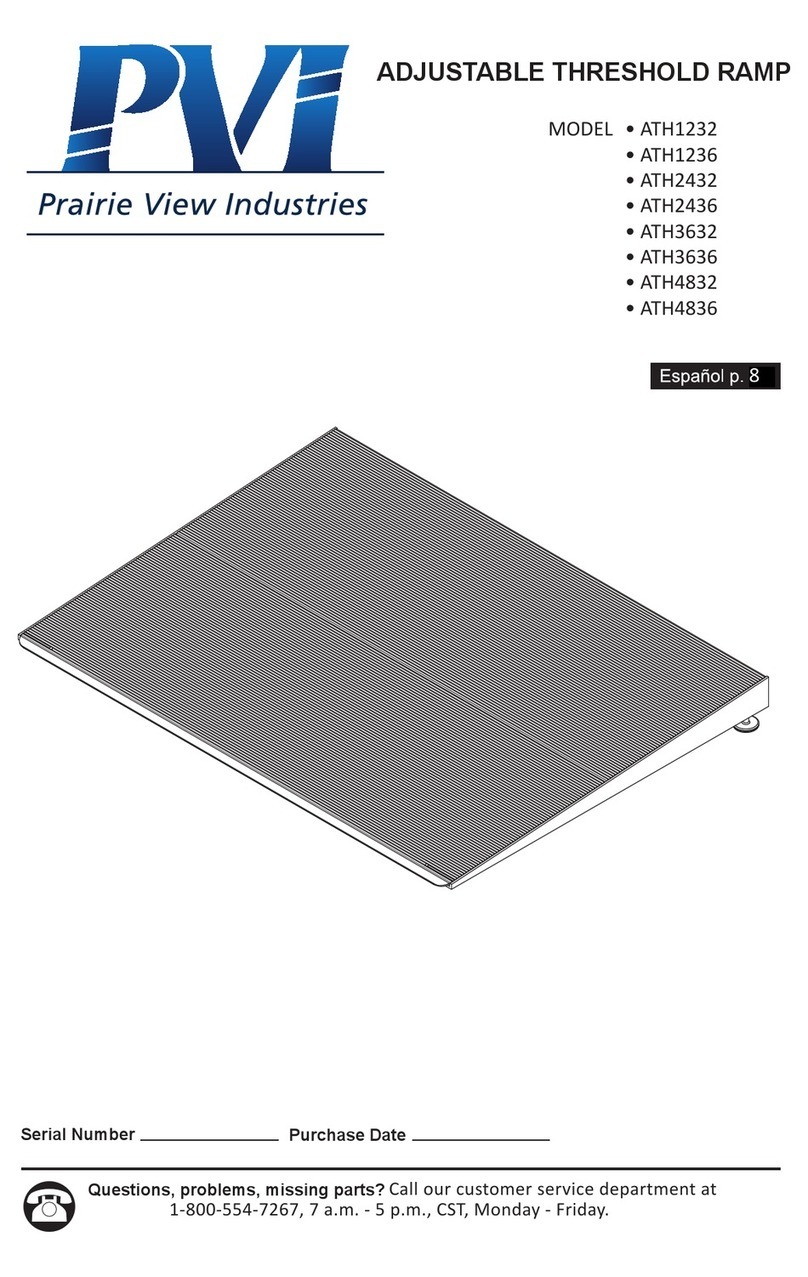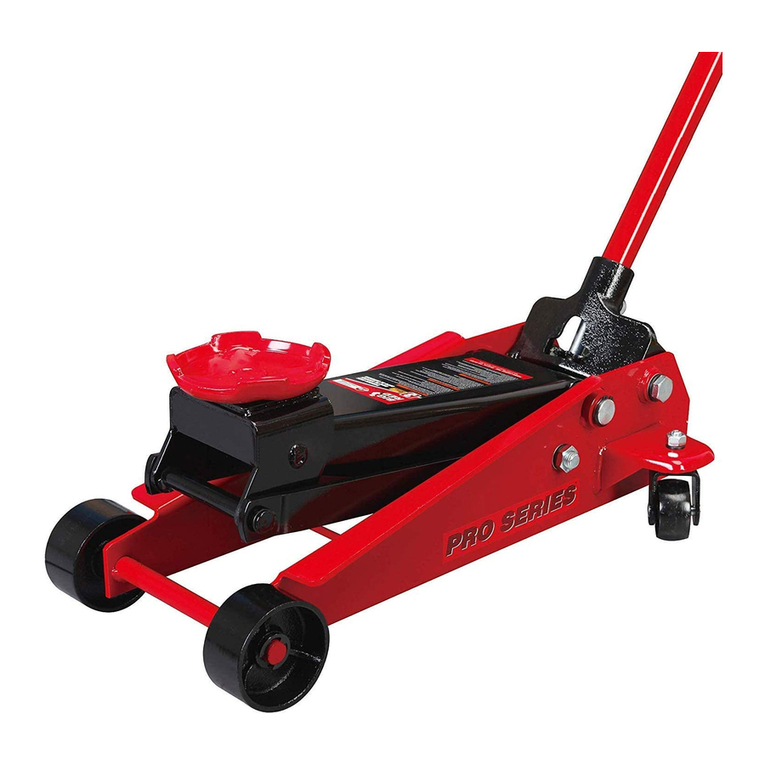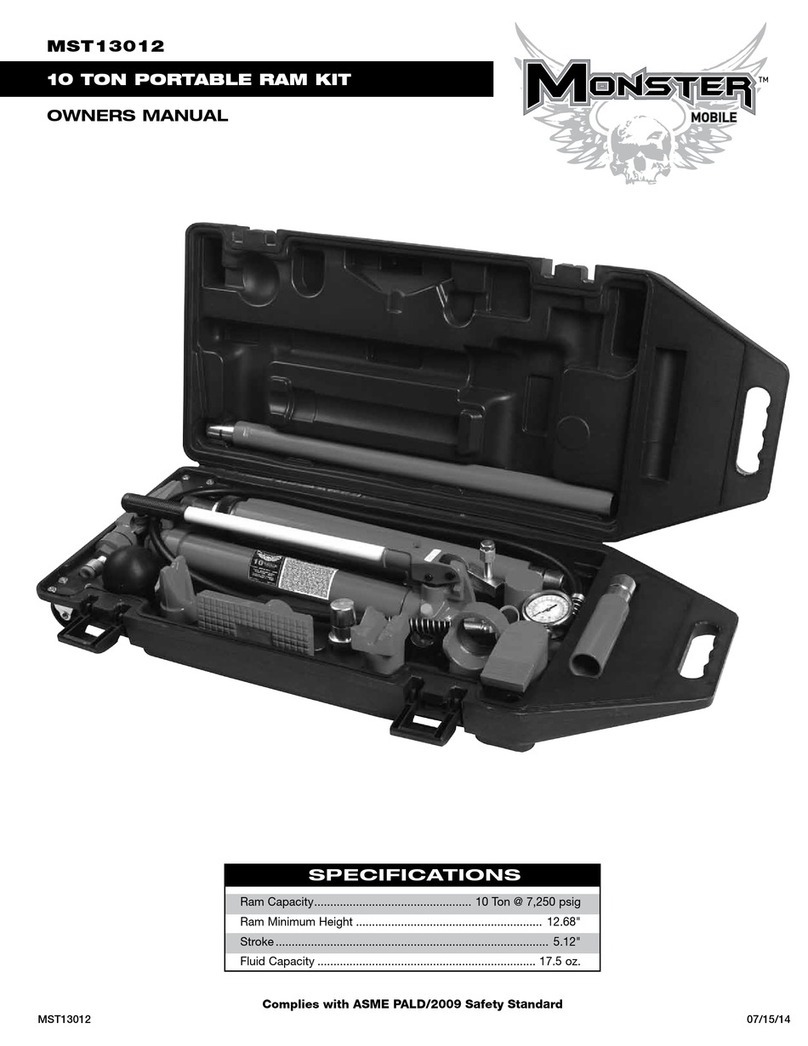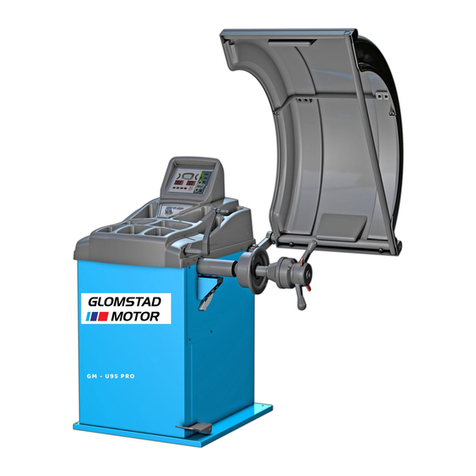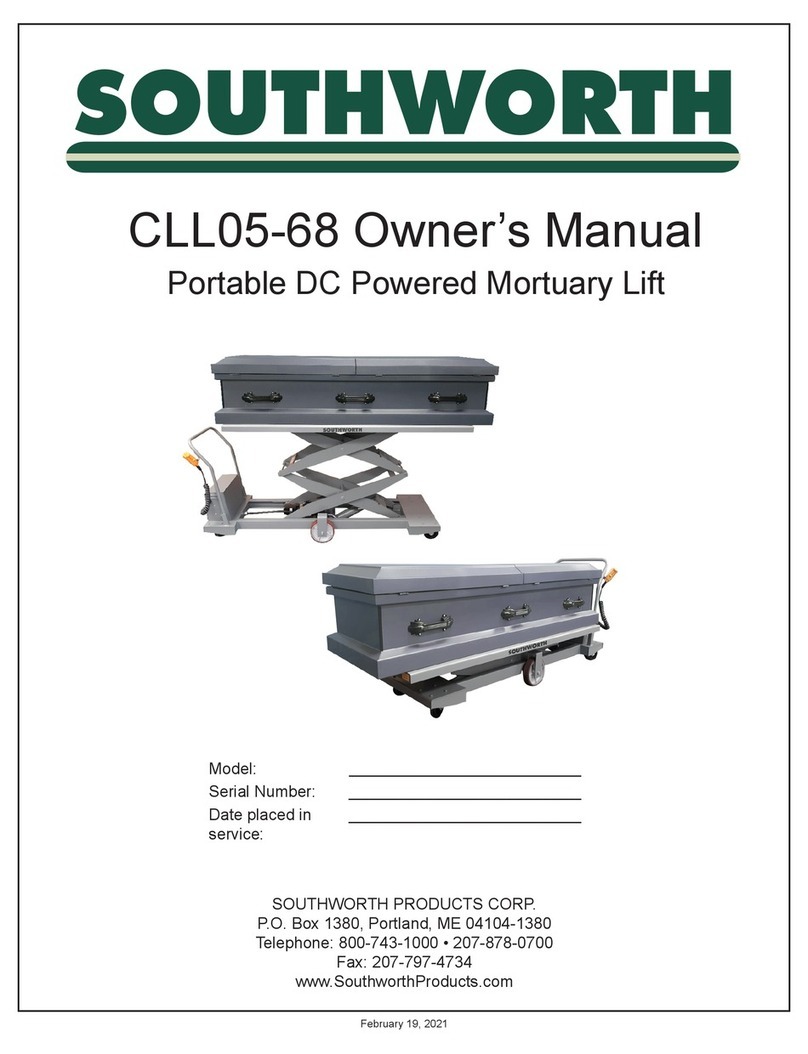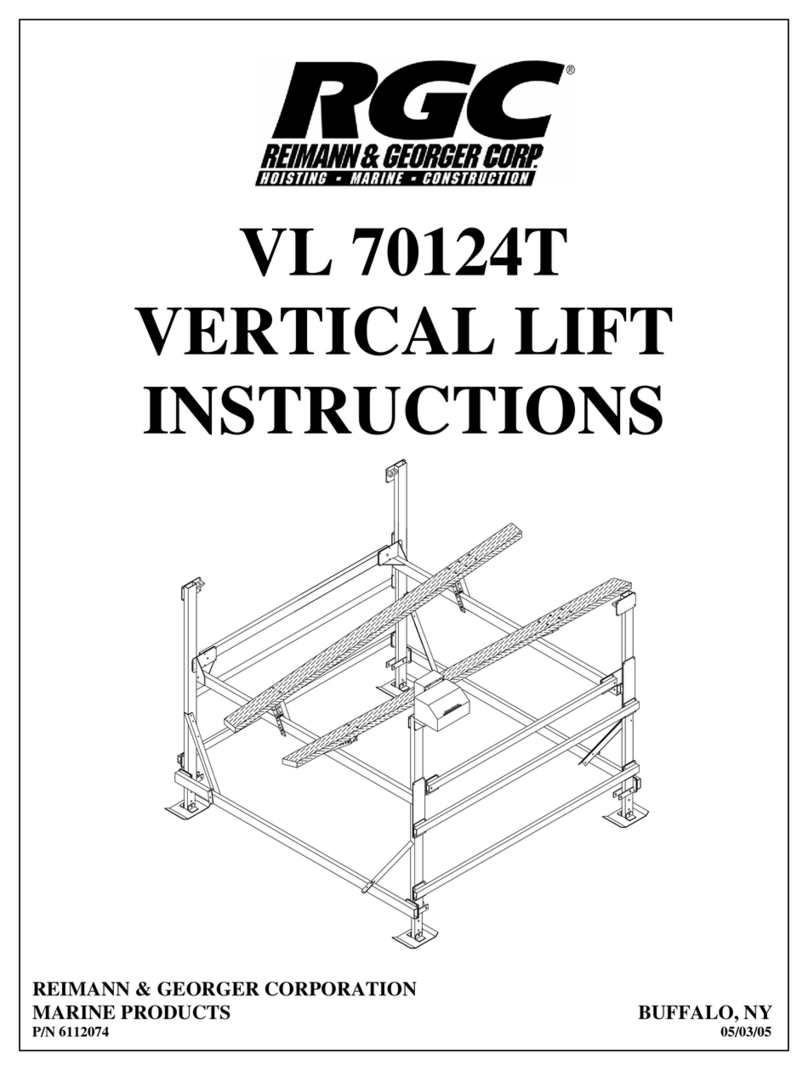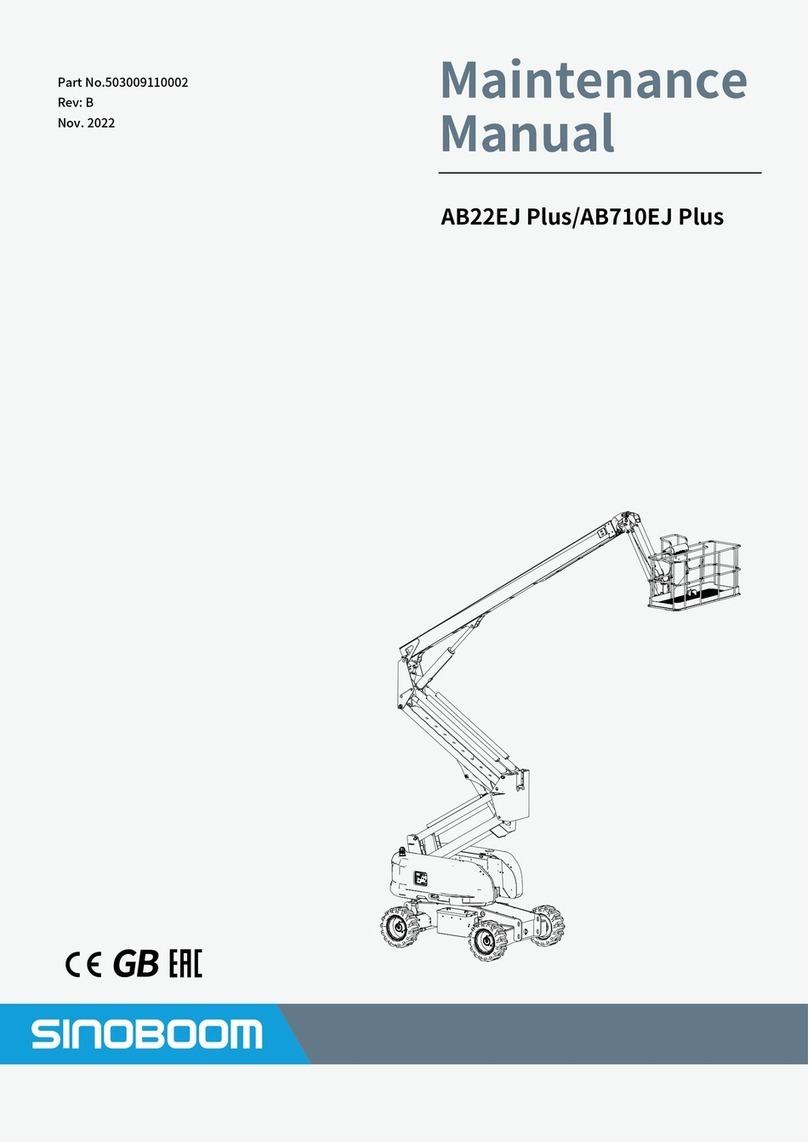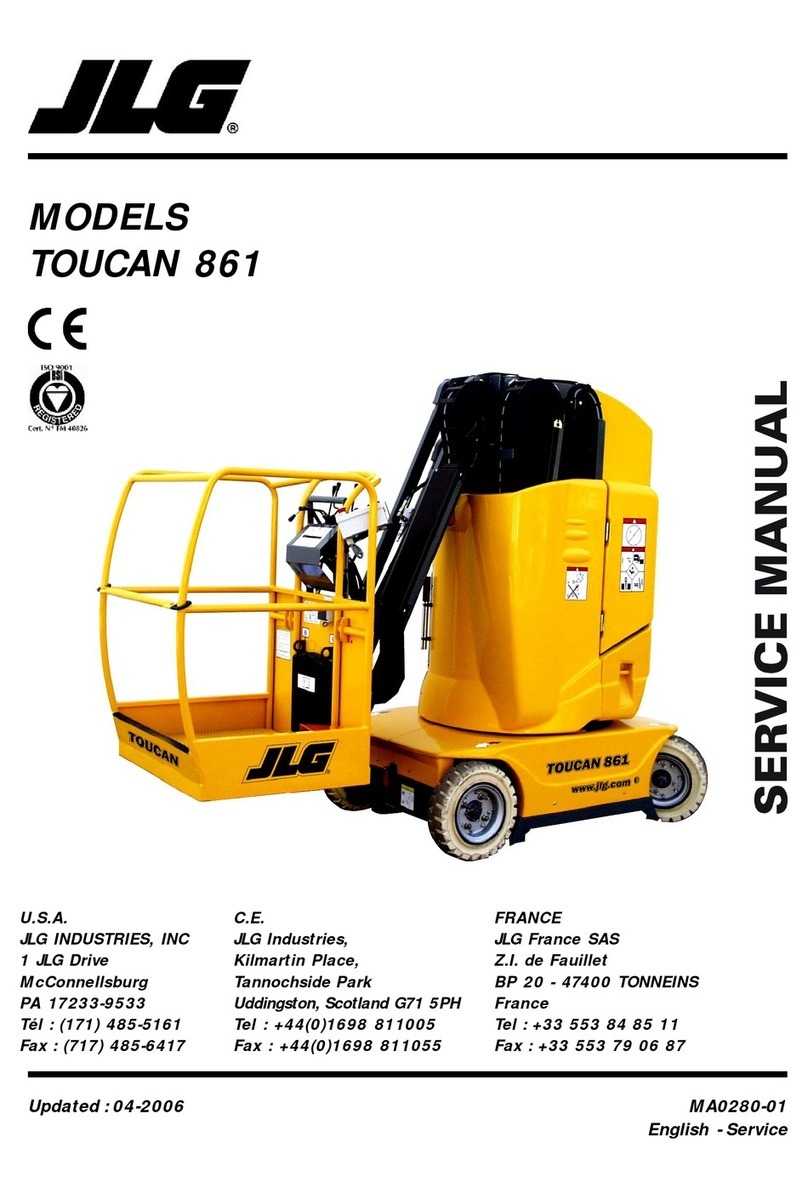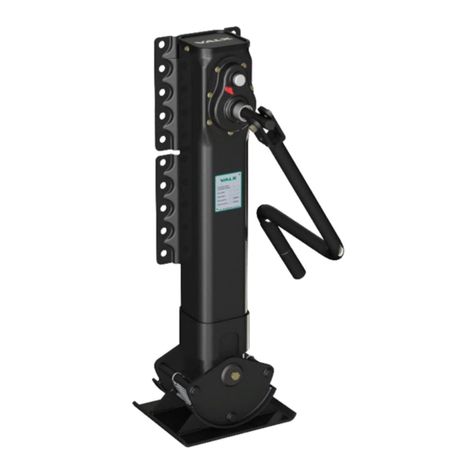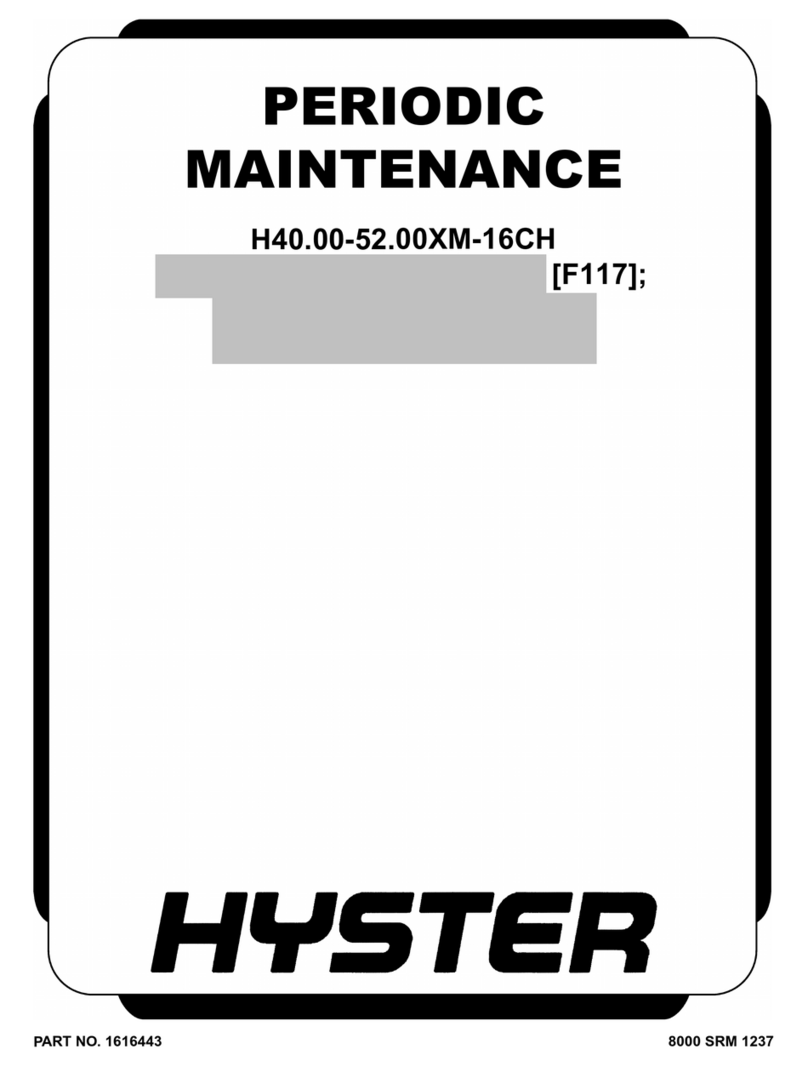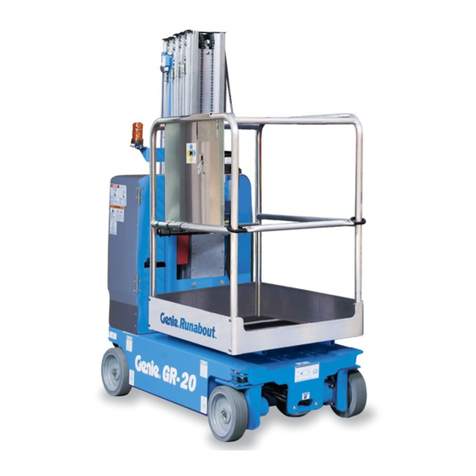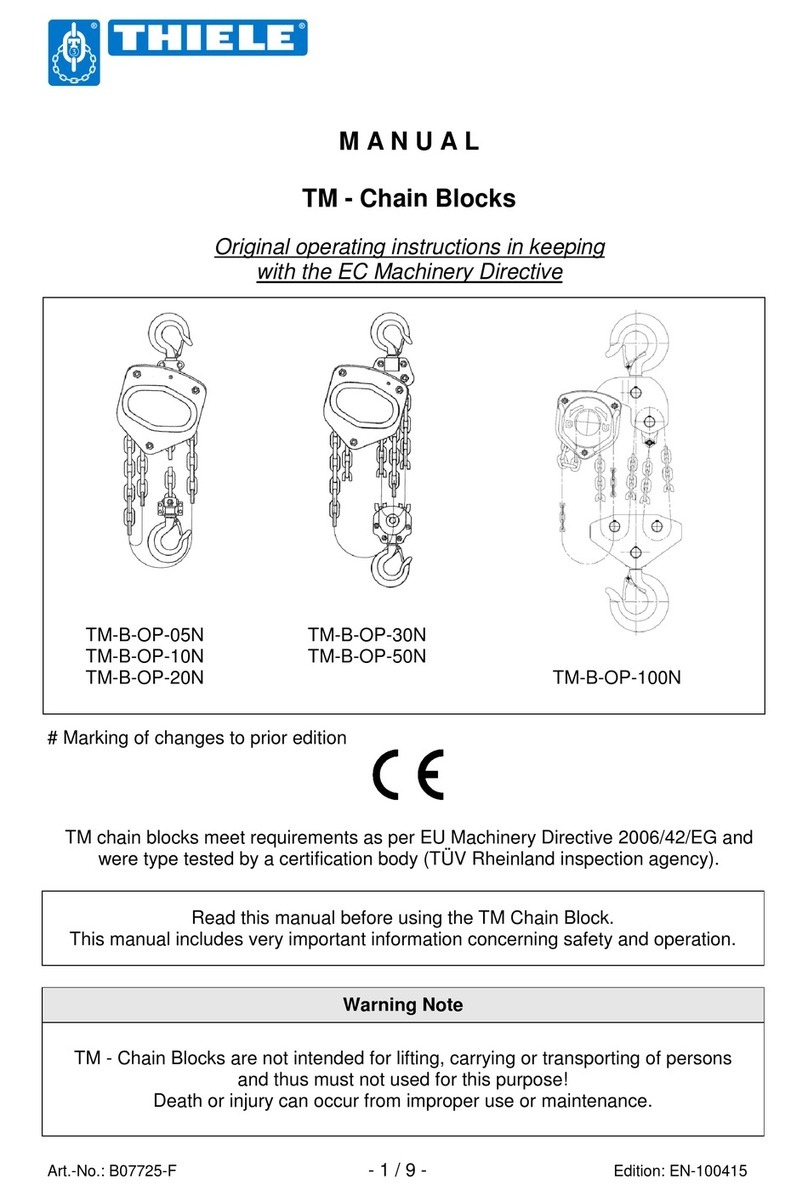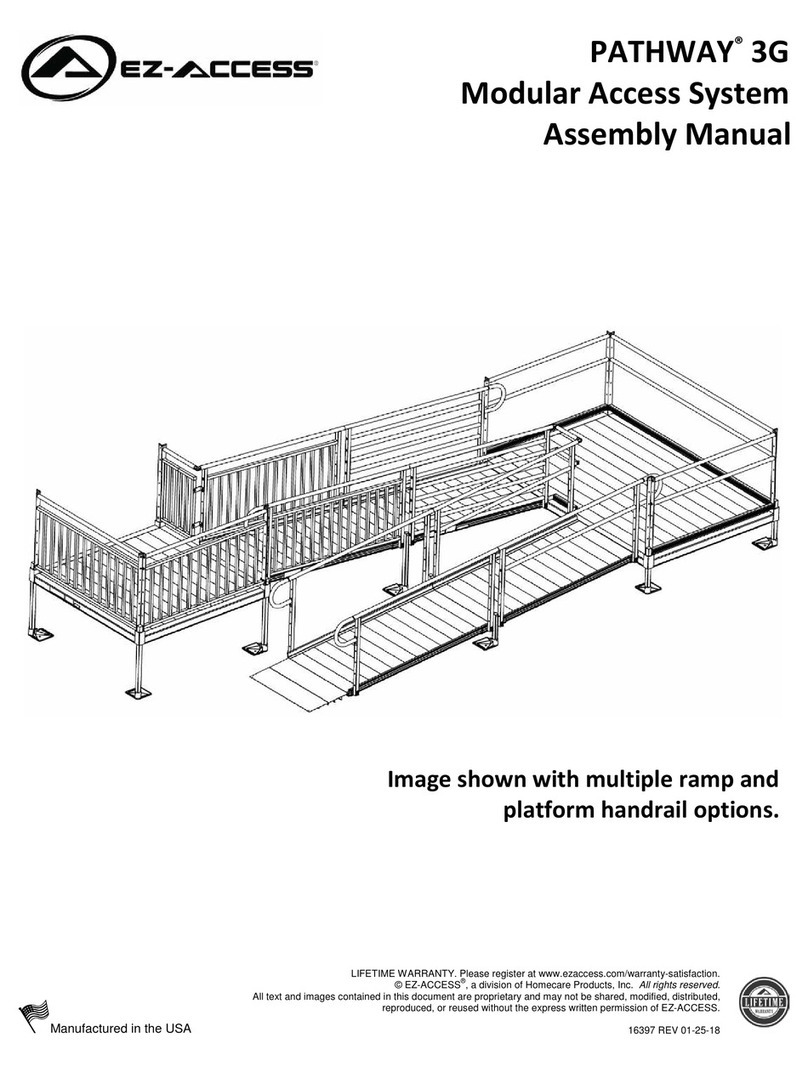Maco HS Salamander evolution Drive 82 User manual

MACO
RAIL-SYSTEMS
PVC
LIFT&SLIDE HARDWARE
ASSEMBLY INSTRUCTIONS
HS Salamander evolution Drive 82
Exclusively for certied specialists!
TECHNOLOGY IN MOTION
maco.eu

2
Table of contents
Important Information 4 - 11
Key and Abbreviations 12
Version and Application area 13
Hardware overview 14 - 15
Assembly on the frame 16 - 28
Calculation formulas 16 - 19
Threshold assembly 20 - 28
Assembly on the sash 29 - 34
Drilling and milling on the sash 29
Drilling and milling jig for HS handle 30
Milling for hook drive gear 31
Roller assembly 32
Drive gear assembly 33
Handle assembly 34
Assembly on the sash and frame 35 - 42
Gasket bridge Scheme D 35
Gasket block Scheme D 36
Locking bolts 37 - 38
Striker plate for hook drive gear 39 - 40
Locking block 41
Buer stop 42

3
Vertical cross-section 43 - 45
Sliding sash 43
Fixed sash Standard and xed sash Design 44
Scheme D, G1 45
Horizontal cross-section 46 - 48
Scheme A 46
Scheme C, G1 47
Scheme D 48

4
Important Information
General Information
The current version of our General Terms & Conditions can be found on the MACO website
(www.maco.eu/en-INT/Terms-and-conditions). Retain these assembly instructions for later use and
maintenance.
Failure to comply with these assembly instructions releases MACO from any liability. Please note your
obligation to inform your customer regarding the operation and maintenance of the system as well as all
safety related information.
MACO as a customer-oriented and service-oriented company oers you the "Operating and
Maintenance Instructions for SKB Standard, Self-locking, Positive Control and PAS END USER"
(Order number 757956) and "Maintenance and setting instructions for SKB Standard, Self-locking,
Positive Control and PAS SPECIALIST" (Order number 757961) for passing on to end customers.
You can nd the documents in the download area on www.maco.eu.
Please hand over the user manual to the end user and ensure they are briefed.
Target Group
This documentation is intended exclusively for specialist companies and certied specialists.
The work-steps described herein may only be carried out by certied specialists.
Certication
The MACO hardware mentioned in the assembly instructions are tested and regularly monitored in
standardised tests in accordance with EN 13126. The achieved Class H3 standard does not refer to your
individual element system. Due to a wide range of inuencing factors, individual element systems may
experience minor deviations from standardised testing, such as:
› the inuence of processing tolerances
› the eect of assembly tolerances aer installation of the element in the building envelope
› the use of accessories (e.g. weather seals, seal rails, handles, etc.)
› the use of attachments (e.g. Aluminium shells, sun protection on the sash, insect protection)
› environmental inuences (e.g. humidity, sunlight, high or low temperatures, temperature uctuations, etc.)
› room-side inuences (moisture, aggressive cleaning agents, etc.)

5
It is important to follow these instructions to ensure people’s safety!
When reading this document and the safety instructions, please note the following signs and colours:
This indication indicates a situation that may arise if the instructions are
not followed and which can lead to fatal injuries.
This indication indicates a situation that may arise if the instructions are
not followed and which can lead to fatal and/or serious injuries.
This indicates a situation that may arise if the instructions are not
followed and which can lead to minor injuries.
Please pay attention to the VHBE guideline (hardware for windows and balcony doors) of the
Gütegemeinscha Schlösser und Beschläge e.V. (quality assurance association for locks and
hardware). This guideline describes all safety-relevant topics for end users for window and balcony
door hardware.
Important Information
General Safety Information
This note indicates important additional information that is relevant to
the error-free assembly / function of the product.
DANGER!
WARNING!
ATTENTION!

6
Important Information
General Safety Information
In order to ensure the long-term functionality and thus the operating safety of windows and balcony doors
over their expected service life, the fastening of safety-relevant hardware parts is of particular importance.
MACO indicates explicitly that large sash weights are moved and accelerated during opening and closing.
This applies particularly to sliding elements. It is at the discretion and the responsibility of the respective
manufacturer (window builder), installers and dealers of windows and balcony doors, in particular of li&slide
doors, to oer corresponding movement restrictors or similar.
Incorrect assembly can lead to serious injuries. The installation must be carried out by personnel who have
been instructed according to the state of the art and recognised rules of technology.
Due to overuse or improper operation of the slide and tilt hardware, the sash may jump out of its guide rails,
fall out and thereby cause serious injuries.
Due to the high weight of the element, always pay attention to the correct securing of the element during
manufacture, transport and assembly on the construction site.
If under special circumstances (use in schools, kindergartens, etc.), it is to be expected that the sliding element
could be overstressed, this must be prevented by appropriate measures such as moving the stop buers to
reduce the opening width.
Improper handling may lead to crushing. Ensure users are aware of the risk in case of improper handling.
This applies particularly to customers with small children.
Injuries may occur in the event of improper handling, in particular if persons or parts of the body are between
the frame and the sash when closing or between the sash and the reveal or adjacent components.
WARNING!
ATTENTION!

7
These instructions describe all assembly steps required to set up standard version hardware. The hardware
must be greased/oiled before commissioning (see operating and maintenance instructions).
The slid and tilt hardware (SKB) are only intended for use in stationary buildings. They are used for horizontally
opening and closing windows and balcony doors. The slide and tilt elements must be installed perpendicular
and never in an inclined position.
Handle position middle (1/2 SRH). With a handle position below 1/2 SRH, operational comfort may be aected.
Important Information
Note:

8
Important Information
Intended use
The areas of application mentioned on page 13 apply to the MACO SKB hardware. Screw-in torque settings are
binding and must be followed.
Mount all hardware parts professionally as described in this manual and observe all safety instructions.
To fasten the hardware, use the specied screw sizes! These must reach into the steel reinforcement when
using PVC proles.
Be sure to follow the prole manufacturer's processing policy.
The hardware may not be used for timber with aggressive content / surface treatments.
The hardware parts described in these assembly instructions are made of colourless passivated steel and
sealed in accordance with DIN EN 12329. They must not be used in environments with aggressive, corrosive air
content. If you are not sure, please ask your MACO contact person for advice.
The hardware manufacturer shall not be liable for any malfunctions or damage to the hardware or to the
windows or balcony doors equipped with them, if they are subject to use of third-party hardware, inadequate
tendering, failure to comply with the installation rules or application diagrams.
The fabricator is responsible for compliance with the functional dimensions specied in these assembly
instructions as well as for awless hardware assembly and secure fastening of all components.
In order not to aect the lightness of the hardware, turn the screws straight (unless otherwise indicated) and
do not over-tighten!
Fix the screws of the supporting components (e.g. rollers, roller rail and guide rail) in the reinforcement prole.
With the spacer-block setting, observe the technical guideline No. 3 of the glazier trade "Blocking of glazing
units".
Keep the roller track and all latches free from deposits and dirt to avoid damage to the hardware and ensure
optimal functionality. In particular, protect the hardware from cement or plaster residues.
Do not make any constructive changes to the hardware parts.
Always close and lock the window and balcony door sash when windy or dray. For the purposes of this
denition, wind and draught are present if the window or window door sashes located in one of the opening
positions are caused to move by air pressure or air suction of their own accord and uncontrollably open or
close.

9
The resistance to wind loads in the closed and locked state depends on the respective construction of the
windows and balcony doors. If wind loads in accordance with DIN EN 12210 (in particular test pressure p3) are
to be expected, suitable hardware are to be selected and agreed on separately in conjunction with the
respective window construction and the frame material.
The dened maximum sash weights for the individual hardware designs must not be exceeded.
The component with the lowest permissible load capacity determines the maximum sash weight. Application
diagrams and component mappings must be observed.
The hardware and the rebate spaces must be suciently ventilated, especially during the construction phase,
so that they are not exposed to direct moisture or condensation.
The hardware are to be kept free of deposits and contamination by building materials (construction dust,
gypsum plaster, cement etc.), therefore windows must be covered accordingly.
The hardware must only be cleaned or polished with mild, pH-neutral detergents in diluted form.
Attach the operating label in a clearly visible manner to the built-in li and slide sash. The operating label is
located in the basic box or in the "corner deection" package.

10
Important Information
Improper use
The respective hardware system may only be assembled with hardware components from the MACO slide
hardware range. In the event of improper installation of the hardware and/or the use of non-original or
non-factory approved system accessories, no liability will be accepted.
Do not use vinegar-based or acid-curing sealants, as these can lead to corrosion of the hardware parts. Further
information on MACO surfaces can be found on our website www.maco.eu or in brochure Order No. 49510 (in
the download area).
The li and slide elements may only be surface treated before the hardware is installed. Any subsequent
surface treatment may restrict the functionality of the hardware. In this case, no warranty claims against the
hardware manufacturer shall be accepted.
Protect the hardware from damage by angular or sharp tools.
If you are not sure, please ask your MACO contact person for advice.

11
Important Information
Storage and Handling
Check the following immediately aer delivery:
› Completeness of delivery (as per the delivery note)
› Any damage to the packaging
› Any damage to the materials
› Improper storage or transport of hardware parts can aect the surface quality. To prevent this, the
following points must be observed:
› It must be ensured that the room air is permanently dry
› Major temperature uctuations leading to condensation must be prevented. Condensation on
hardware causes the galvanised surfaces to be attacked
› Avoid aggressive vapours from cleaning agents or assembly aids such as silicone and the like, even
for a short time. Vapours from such substances can very quickly lead to corrosion of hardware
› Salty air polluted by trade and industry also leads to corrosion on galvanised surfaces and is also
not suitable for storage areas.
Transport
Finished elements must be stored and transported as follows:
› Upright
› Slip and tilt secured on suitable surfaces (e.g. G. transport frames)
› Protected from dirt and damage
› Avoid loads on mechanical connections!
› Use special transport devices!
For intermediate storage outdoors:
› ensure elements and hardware are covered or packaged

12
Key and Abbreviations
Dimensions in [mm]: All dimensions without a unit denition are given in mm
O
!
HS Li and Slide element (LS)
FB Sash width (SW)
FH Sash height (SH)
RAB Frame outer width (FOW)
RAH Frame outer height (FRH)
Total length
GM Handle height (HH)
DM Backset drive gear (BS)
OOptional
Important Information
FE Fixed element
Permanently elastic sealant

13
21
Schema A DIN links
FB
RAB
RAH
FH
GM
Schema C
Schema A DIN rechts
Schema D Schema G 1 Schema K
Version and Application area
Version
Application area
The application ranges stated in the table apply for MACO L&S 300.
The maximum application ranges and weights specied by the prole manufacturer apply when processing
the proles and must be observed.
Department
Designation Unit Tall roller track Flat roller track
FB (Sash widht) (mm) 740 - 3330
FH (Sash height) (mm) 765 - 2880 755 - 2870
Weight of sliding sash (kg) max. 400*
DM (Backset drive gear) (mm) 37,5
GM (HH) drive gear size Gr. 1 - 2 (mm) 409 399
GM (HH) drive gear size Gr. 3 - 4 (mm) 1009 999
* From a sash weight of over 200kg, we recommend installing a drive damper.
(The drive damper can be ordered via the Technical Online Catalogue (TOM) or via the Catalogue.)
Scheme A DIN le Scheme A DIN right
Scheme C
Scheme D Scheme G1 Scheme K

14
9
11
10
12
11
14
16
8
4
9
7
11
10
10 15
16 8
60
5
3
6
65
31
20
55 55
56
31
26
31
21
31
29 22
29 22
58
57 58
40 31 31
28
28
28
2
1
28
32
25 37 29
27
25 37 29
32
27
25 37 29
32
27
25 37 29
32
27
19
17
18
16
36
35
Hardware overview

15
Hardware overview
1HS handle
2Li drive gear locks DM 37.5 PZ
3Connecting rod punched HS 16.4 x 4
4MACO GRP threshold with hinging groove
5MACO Fiber-Therm roller track, 2.5 mm asymmetrical
6MACO PVC intermediate prole
7Gealan attachment rail for xed sash, length = 100 mm
8Connection plate for Fibertherm Gealan S9000 silver
9EPDM gasket for connection plate 2 mm
10 EPDM gasket for roller track groove 6 mm
11 Hardware screw Pozidrive 4 x 30 silver
12 Sealing plate with drainage for intermediate prole le silver
14 EPDM gasket for gasket plate 2 mm le + right black
15 EPDM gasket for buer stop bar xed sash Gealan S9000
16 EPDM gasket for intermediate prole Gealan S9000
17 EPDM gasket for centre area 2 mm black
18 EPDM seal Black for roller track at Gealan S9000
EPDM seal Black for roller track high Gealan S9000
19 Gasket bridge HS for 12 mm air
20 Front roller HS with brushes 300 kg silver
21 Rear roller HS with brushes 300 kg silver
22 Buer stop So 20 mm high grey
25 Packer for HS-PVC locking bolt, thickness = 0.5 + 1 mm silver
26 Rod guide for roller track high, groove 17 x 22
27 Countersunk screws B 4.8 x 80
28 Countersunk screws B 4.8 x 60
29 Countersunk screws B 4.8 x 38
31 Countersunk screws B 4.8 x 19
32 Countersunk screws B 4.8 x 90
optional
35 Stop buer package 28 mm gap
36 Countersunk self-tapping screws B 4.8 x 80
55 L&S roller underlay for front and back roller 10 mm stackable in silver
56 Rod guide for at roller track, silver, groove 27 x 22
57 Countersunk self-tapping screws B 4.8 x 25
58 Chip board screw PZ 5 x 30 countersunk
60 MACO Fiber-Therm snapper for at roller track
65 MACO Fiber-Therm doubling prole

16
FB
55
FB
FB Free 15
55
11
88,5
88,5
L = RAB
55
L = (RAB/2)-98
L = RAB - 135
Schema A
RAB
FB
5
6
4
Assembly on the frame
Calculation formulas Scheme A
Scheme A

17
88,5
12
RAB
FB FB
Schema C
RAB
FB FB
Schema G1
88,5
L = (2 x FB) - 90
L = RAB
L = RAB - 124
55
88,5
L = RAB
L = (RAB/3) - 96
88,5
L = (RAB/4) - 67 L = (RAB/4) - 67
55
6
55
5
6
4
5
6
4
6
Assembly on the frame
Calculation formulas Scheme C + G1
Scheme G1
Scheme C

18
7
90
≤ 500
7
7
7
7
Assembly on the frame
Supplement calculation formulas Scheme G1

19
2
1
L = RAB
L = FB - 6
64
L = RAB - 135
55
L = FB - 61
55
FB
FB
RAB
Schema D
L = FB - 79
88,5
L = (RAB/2)-248
88,5
L = FB - 79 55
L = RAB - 148
55
L = RAB
FB fix
RAB
FB
FBFB
Schema K
88,5
6
4
5
6
5
6
6
4
Assembly on the frame
Calculation formulas Scheme K + D
Scheme K
Scheme D

20
№ 229010
Ø5,5
Ø5,5
Ø5,5
Ø5,5
RAB
107
44
11
11
27,5
44
33
22 50
49
49
22 50
∅5,5
107
Ø5,5 Ø5,5 Ø5,5
Ø14Ø14 Ø14
№ 229010
Ø5,5
Ø5,5
Ø5,5
Ø5,5
RAB
107
44
11
11
27,5
44
33
22 50
49
49
22 50
∅5,5
107
Ø5,5 Ø5,5 Ø5,5
Ø14Ø14 Ø14
Assembly on the frame
Threshold assembly Scheme A, C, G1, K
Table of contents
